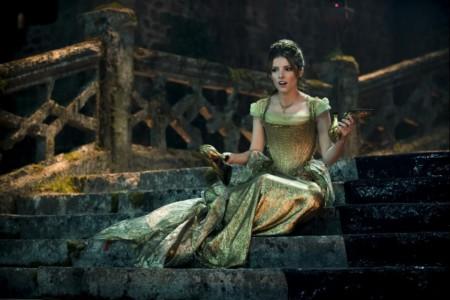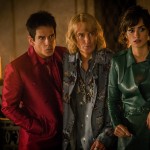“Once upon a time…”
With that, this story begins as so many others do. It makes sense, though; even with a steady stream of rebooted and reimagined fairy tales giving, say, machine guns to Hansel and Gretel, these modernized retellings still hold flecks of the lessons they always have. “Once upon a time,” after all, could be whenever.
“These stories kind of belong to the ages, you know, [so] it makes sense that in some ways we update them every generation,” said Anna Kendrick in a conference call interview with The Daily Free Press.

The show compiles a handful of too-familiar fairy tale characters and tosses them into the titular woods to see what happens. Since there’s no drama in five different happily-ever-afters ― straight-ahead fairy tales weren’t made for ensemble casts ― the characters need complications. In this case, that doesn’t mean grit and brutality, but honesty and realness.
“The one thing that he [director Rob Marshall] allowed me to do was to sort of be a sort of over-thinking, over-logical, neurotic princess,” Kendrick said. “Modern women have a tendency to overthink everything and they don’t trust their gut, and we [as women] have to look at everything from every angle and find the right decision.”
In that way, the change lies not in Cinderella’s story, just in the way it sounds to those hearing it. That modern rationale goes for every character. Chris Pine, who plays Cinderella’s dashing prince, weighed in with his own complicated and nuanced interpretation of his role.
“Everybody in this film goes through these really wonderfully complex journeys, and they experience joy and heartache and sorrow and grief,” Pine said. “And then my prince is just way more two-dimensional than that. And there’s a kind of a wonderfully self-absorbed person [in him], and I think that I had a lot of fun bringing some levity to the picture.”
“I would also like to point out that I really appreciate Chris Pine’s use of the word ‘picture’ just now, like he’s under contract at MGM,” Kendrick added.
“I think picture sounds more elegant,” Pine said. In his defense, amid all this talk of timelessness, is it really so wrong to sound dated?
After all, there’s a line to walk in updating timeless tales. Both the composer-lyricist Sondheim and writer Lapine wrestled a bit with how many of the liberties they took in penning the show would slide in in the setting of a wholesome Disney picture. The New Yorker published an article in June 2014 of an interview with Sondheim, as he described some of his misgivings about downplaying the more adult themes from the original production to suit younger audiences.
“Censorship is part of our puritanical ethics, and it’s something that they’re [artists] going to have to deal with,” he told The New Yorker. “There has to be a point at which you don’t compromise anymore, but that may mean that you won’t get anyone to sell your painting or perform your musical. You have to deal with reality.”
It’s one thing to turn Prince Charming into a vain goofball; it’s another thing to pepper the Wolf’s song to Little Red Riding Hood with lascivious undertones. At the same time, isn’t the point of fairy tales to ease children into the realities of real life? If anything, toning down the “happily” in everyone’s ever after just makes the story more honest. In Kendrick’s eyes, that dilemma stretches beyond just this interpretation of the tales in question.
“There’s the element where it’s pure fantasy and it’s exciting for kids. And then there’s an element that’s really specifically centered towards parents, which is, ‘we have to be careful what we tell our children,’” Kendrick said in reference to the show’s finale song, “Children Will Listen.”
“Careful the tale you tell,” the Witch sings. “That is the spell.”
Therein lies the story’s own moral: Actions have impacts, whether it’s the things we do to get what we want or the stories we tell to put our kids to bed. Whenever “once upon a time” may be, whether it’s Cinderella fleeing the ball or Jack scaling the beanstalk, they mean something to the people listening, no matter how young they are. Nobody can shield a child from reality. We have no choice but to teach and the best we can do is be responsible. If we use a little magic to do so, maybe it’s for the better.
“Children take lessons to heart,” Kendrick said. “And ‘Into the Woods’ is sort of about understanding that they’re listening to us even if doesn’t feel that way.”
“Into the Woods” opens on Dec. 25 and stars Meryl Streep, Emily Blunt, James Corden, Anna Kendrick and Chris Pine.
Joe covers Shrek the Musical for The Daily Free Press. He previously served as managing editor.




